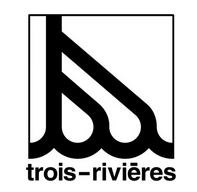RI_534
Type of resources
Available actions
Topics
Keywords
Contact for the resource
Provided by
Formats
Representation types
Update frequencies
status
-
City of Trois-Rivières sewer pipe network**This third party metadata element was translated using an automated translation tool (Amazon Translate).**
-
City of Trois-Rivières network valves**This third party metadata element was translated using an automated translation tool (Amazon Translate).**
-
Drinking water pipes in the city of Trois-Rivières.**This third party metadata element was translated using an automated translation tool (Amazon Translate).**
-

AAFC’s Canadian Ag-Land Monitoring System (CALMS), operational since 2009, was developed by AAFC’s Earth Observation Service (EOS) to deliver weekly NDVI-based maps of crop condition in near-real-time. The CALMS uses data collected by the Moderate Resolution Imaging Spectro-radiometer (MODIS), a sensor mounted onboard NASA’s Terra satellite that has been acquiring data since February 2000. The state-of-the-art radiometric, spectral and spatial resolutions of MODIS Terra make it particularly well-suited for large-scale vegetation mapping and assessment. Crop condition (NDVI) maps are generated weekly by AAFC throughout Canada’s growing season, the period defined as the six-month period stretching from the start of Julian week 12 (end of March) to the end of Julian week 44 (late October). Weeks of the year are defined according to the ISO 8601 week-numbering standard, where weeks start on a Monday and end the following Sunday. CALMS products are generated in the MODIS native Integrated Sinusoidal (ISIN) projection for the region covering the twelve MODIS tiles h09v03 to h14v03 and h09v04 to h14v04.
-
The purpose of this feature class is to show areas that are National Parks (NPs), National Park Reserves (NPRs) and National Marine Conservation Area (NMCAs). Parks Canada manages more than 43 NPs. (See: https://parks.canada.ca/voyage-travel/recherche-tous-parks-all) for a list of PCA administered parks. By using this data, it is important to understand and accept that the data is not to be used for defining boundaries. Administrative decisions should be based on legal documents and legal survey plans. Canada Lands Surveys: https://clss.nrcan-rncan.gc.ca/clss/plan/search-recherche
-
City of Trois-Rivières flow control valve**This third party metadata element was translated using an automated translation tool (Amazon Translate).**
-

Location of municipal sports fields on the territory of the City of Repentigny.**This third party metadata element was translated using an automated translation tool (Amazon Translate).**
-
Road network of the City of Trois-Rivières.**This third party metadata element was translated using an automated translation tool (Amazon Translate).**
-
This point-layer shows the locations of components that make up facilities (Facilities are stored in another layer). Examples of facility components are barbeques, picnic tables, benches, or kiosks. See the Comp domain for a complete list. NOTE: Although some of the items in the domain appear to be activities, they are actually physical entities that appear within a facility. A facility component point would be stored in this layer to show a more precise location of the kayak rental place of business. Data is not necessarily complete - updates will occur weekly.
-
City of Trois-Rivières pressure reduction valves**This third party metadata element was translated using an automated translation tool (Amazon Translate).**
 Arctic SDI catalogue
Arctic SDI catalogue
